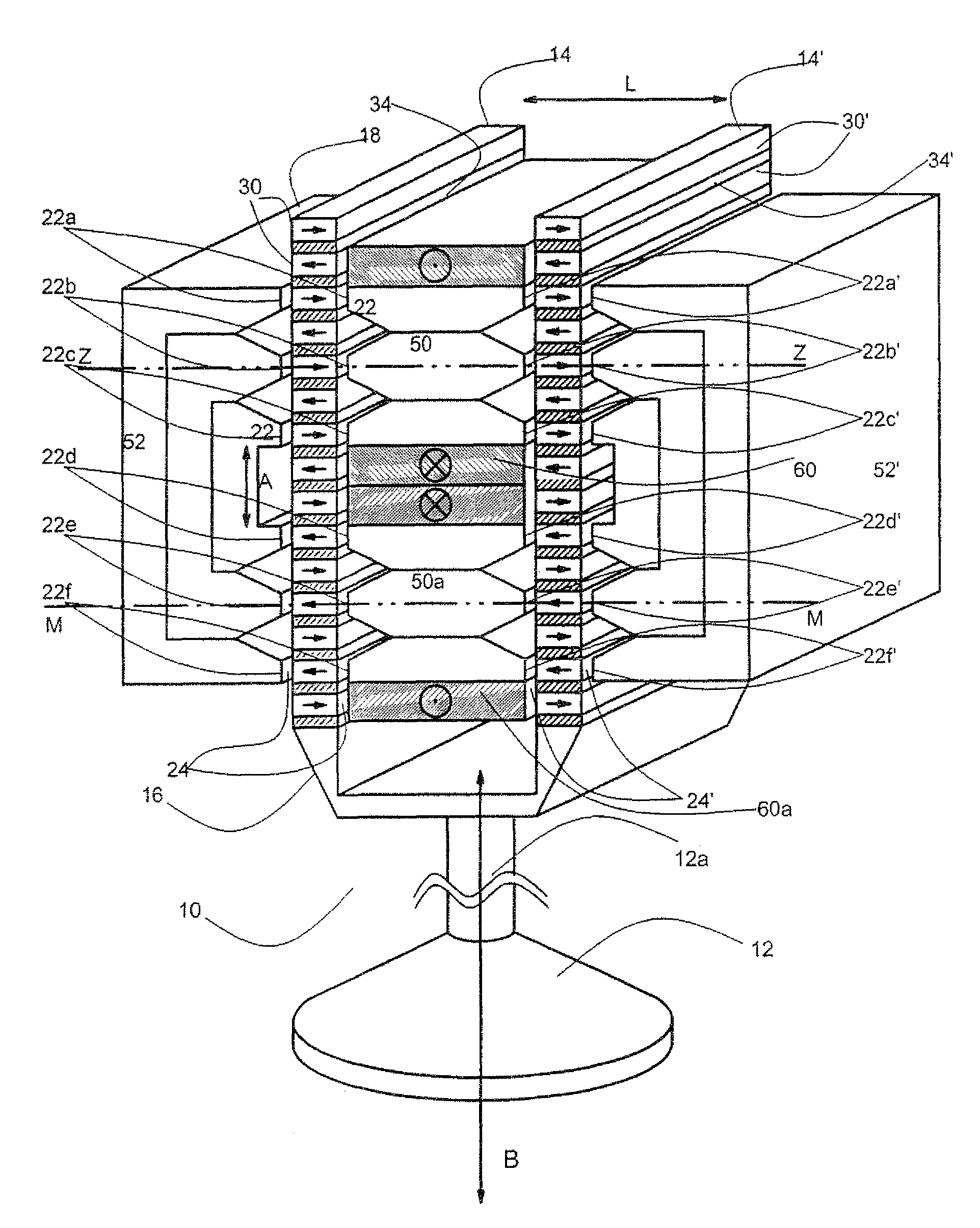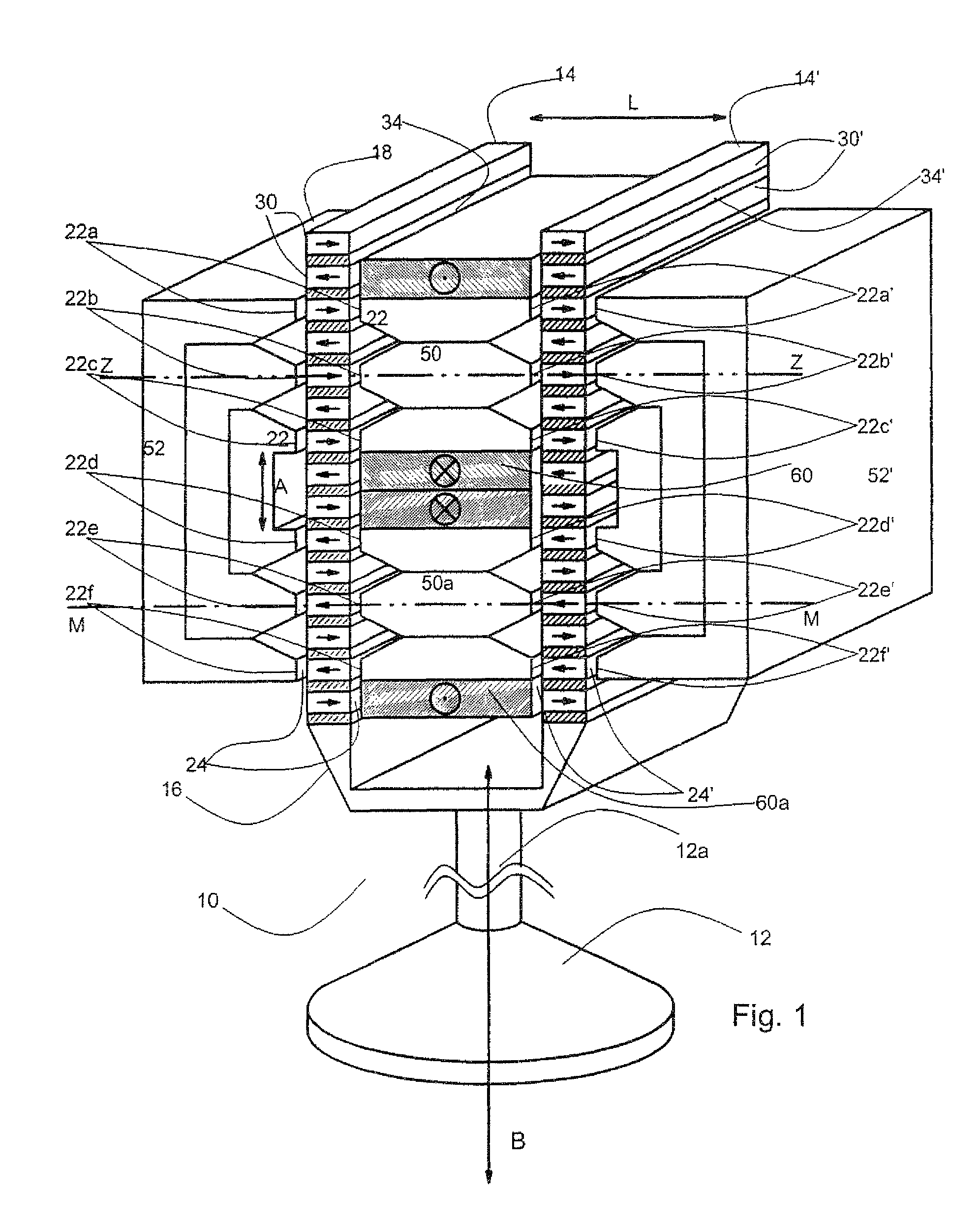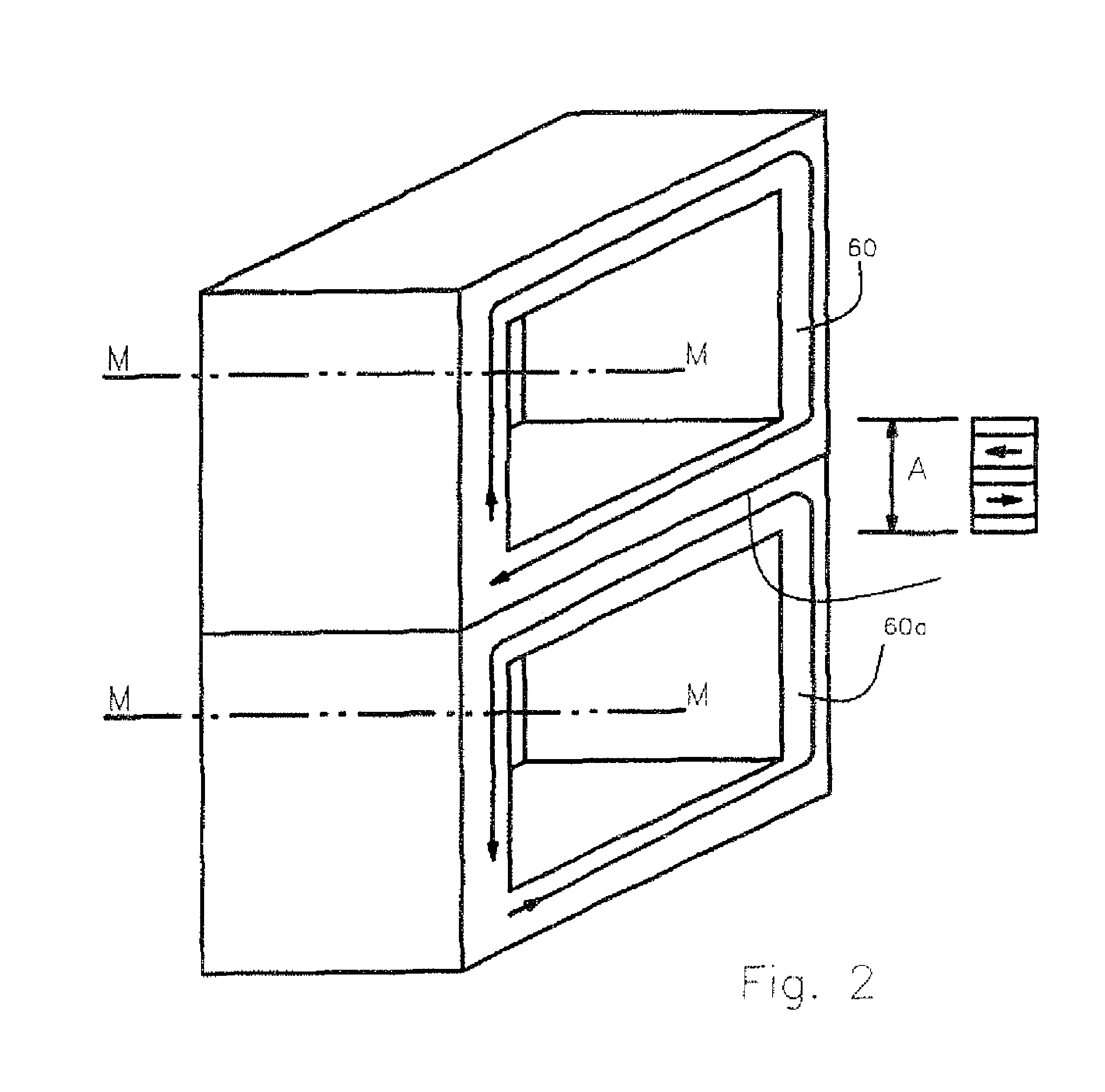Gas exchange valve actuator for a valve-controlled internal combustion engine
a technology of internal combustion engine and actuator, which is applied in the direction of valve operating means/release devices, machines/engines, non-mechanical valves, etc., can solve the problems of low rotor inert mass and high stability
- Summary
- Abstract
- Description
- Claims
- Application Information
AI Technical Summary
Benefits of technology
Problems solved by technology
Method used
Image
Examples
Embodiment Construction
[0050]FIG. 1 illustrates a first form of embodiment of an electric linear motor 10 which serves, in the valve arrangement according to the invention, as an actuator for a valve member 12 belonging to a gas exchange valve, whose appertaining valve seat is not illustrated. The linear motor 10 has a rotor 16, which is coupled to the valve member 12 via a rod 12a, and a stator 18. Those skilled in the art understand that the term “rotor” is used broadly to identify a moving element even though the motion is translational and or rotational. In the following description the rotor 16 translates and reciprocates along its axis. Said rod 12a is provided with an apparatus, of which nothing further is illustrated but which permits rotation of the valve member 12 about its central longitudinal axis and makes it possible to compensate for dimensional tolerances.
[0051]The rotor 16 has two parallel stacks 14, 14′ which are arranged at a distance L from one another and consist of a large number of ...
PUM
 Login to View More
Login to View More Abstract
Description
Claims
Application Information
 Login to View More
Login to View More - R&D
- Intellectual Property
- Life Sciences
- Materials
- Tech Scout
- Unparalleled Data Quality
- Higher Quality Content
- 60% Fewer Hallucinations
Browse by: Latest US Patents, China's latest patents, Technical Efficacy Thesaurus, Application Domain, Technology Topic, Popular Technical Reports.
© 2025 PatSnap. All rights reserved.Legal|Privacy policy|Modern Slavery Act Transparency Statement|Sitemap|About US| Contact US: help@patsnap.com



